|
I've loaded a pdf version of my 2016 SEAC presentation "Social Implications of Large-Scale Demographic Change During the Early Archaic Period in the Southeast" onto my Academia.edu page (you can also access a copy here). Other than a few minor alterations to complete the citations and adjust the slides to get rid of the animations, it's what I presented at the meetings last Friday. I tend to use slides as prompts for speaking, so some of the information that I tried to convey isn't directly represented on the slides. There's enough there that you can get a pretty good idea, I hope, of what I was going for.
If you're a writer, you may have noticed a recent shortage in the supply of capital letters and exclamation points. All good scientists know that correlation does not equal causation, but I would like to go out on a limb and propose an explanation: J. Hutton Pulitzer (aka TreasureForce Commander) has used them all. Okay, that's a bit of an overstatement. He didn't use them all, just more than his fair share. The occasion was his announcement that he has proved that "Minoans discovered America 4000 years BEFORE Columbus!" (emphasis in original). Pulitzer's liberal use of all caps and exclamation points, apparently to indicate the importance of his claims and communicate his significant enthusiasm for them, has left the rest of us a little short. This post will be necessarily conservative in its use of those two precious commodities. You should look at Pulitzer's post and decide if you think the monopolization of the supply of capital letters and exclamation points was justified. As you might guess, I'm not impressed. My first reaction as I skimmed through Pulitzer's post about his "audit archives research" on May 24th was "wtf?" (normally that would be in caps, but there's a shortage on you know). He posts some pictures of some oxhide ingots from the Uluburun shipwreck (as his "comparative" sample) and then 16 photos of features and artifacts from archaeological sites in Tennessee and Kentucky, all now labeled "Minoan" by Pulitzer. The photos appear to have come from the WPA Archaeological Photo Archives of the McClung Museum of Natural History and Culture at the University of Tennessee. Obviously, whoever decided to post all these photographs online really dropped the ball on keeping all this "forbidden history" hidden from the public. Maybe there was a memo missed somewhere. Too late now: the cat's out of the bag. (I really feel like that statement would have popped more with some exclamation points, but somebody hogged them all. At least there's still italics.) 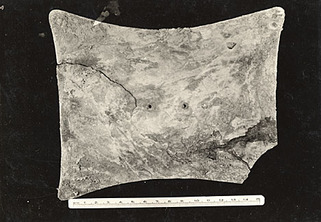 Copper artifact from Drake Mound, KY. Copper artifact from Drake Mound, KY. Pulitzer shows more photos of European oxhide ingots, then a bunch more photos from Tennessee: excavated wooden post structures, pit features, etc. Then some unlabeled pictures of pottery, some other pictures copied out of books, more stuff, some other stuff . . . it just goes on and on. He even reproduces the photograph that I took of a page from Betty Sodders' book for a post about the alleged oxide ingot of Lake Gogebic, Michigan. Then he shows us the same "Minoan large ox hide ingot" that he's already showed us. I guess he really likes that one. I'll go ahead and show it to you also. There (here's the source). The artifact from Drake Mound, as well as several of the other artifacts shown by Pulitzer, do have the same basic shape as some of the European oxhide ingots: roughly rectangular with four concave sides. But are they same size? Do they weigh the same? Are they made from pounded copper or are they cast? And why do some of them have pairs of holes drilled in them? Do any European oxhides have holes drilled in them? Those are questions that someone who was actually doing research would attempt to address. If it were me, I would start with size: how big are the copper reels that Pulitzer says are actually cast oxhide ingots, and how do those dimensions compare with those documented for European oxhide ingots? For a moment I thought about doing that comparison myself, but then I decided I've got better things to do with my time and the person making the claim should do some work. I'll help out by pointing him to this source: Copper Oxhide Ingot Marks: A Database and Comparative Analysis. It's an M.A. Thesis by Alaina M. Kaiser from 2013. There are metric data in Appendix IV. You're welcome. What about dates from any of the features or structures that are claimed to be Minoan? Any information on those? 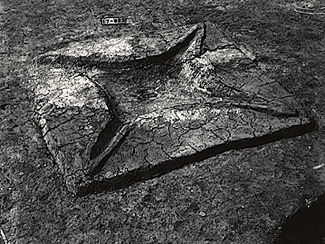 Feature from the Charles Lea Farm site, TN. Feature from the Charles Lea Farm site, TN. The features from the Charles Lea Farm site that Pulitzer labels "Minoan Ox Hide Ingot Mold" are unusual. I'll reproduce one of those photos (source) also so you can see it: it appears to be some kind of basin-shaped feature with four incurvate sides and elongated corners. Yes, it's shaped similarly to an ox hide ingot. I honestly don't know what it is (or in what context it was found at the site) and I would be curious to hear from archaeologists who might know more about these. Woodland or Mississippian? It's unfortunate that there's no scale with the photo. I don't know if there's any kind of written report that describes these features in more detail (there appear to have been at least two at the site). Writing "Minoan" on a WPA photograph does not actually mean that one has proven that the remains are Minoan. It only means that one has photo editing software, which is all that is required to make an assertion. If I were to write "idiot" on a photograph of a person, for example, I have only asserted that the person is an idiot: I would still have to demonstrate idiocy in order to prove my claim. I think I would do that by paying more attention to the question marks (you'll notice there are still plenty of those to go around) than to the exclamation points. With all the melodrama and hullabaloo surrounding the fantastic assertions of Pulitzer about "forbidden history" and his "smoking gun archaeological evidence," you would think there would be more indications of effort. At the end of the piece, Pulitzer is quoted as saying “If there ever was a better open and shut archaeological case this discovery is it!” I'm not sure what the case is supposed to "better" than, but I can list a lot of things it's worse than. I wish I had a spare exclamation point to put there. Addendum (6/4/2015): This post has been up since yesterday, and I have a couple of things to add to it.
First, on the initial reaction to the piece. As soon as this was posted, I was told by some fans of "forbidden history" that I should be focusing on the substance of Pulitzer's "theory" rather than simply attacking his style. If you read the piece carefully, you'll find that my major point is that there IS NO SUBSTANCE to attack (Hey look - the drought in capital letters has eased up! And so has the shortage of exclamation points!!). You'll see I never actually said Pulitzer's "theory" is wrong: I said I wasn't impressed with what he presents. He didn't even do the simplest things he could have done to actually make a case based on evidence, basically relying almost completely on assertions (bolstered by lots of exclamation points and capital letters - those seemed to comprise the main forms of support). I pointed out a couple of things that would be easy steps to take if one wanted to present a case that the Tennessee and Kentucky materials were actually made by Minoans. The photo of the alleged "Minoan Ox Hide Ingot" from the Drake Mound in Kentucky has a scale with it, for example, and measurements of that artifact could be compared with are metric data available for ox hides from Europe. Why not do a comparison? As I said in the piece, I thought about doing it myself, but it's really not my job: it's the job of the person making the claim. You want to claim something from Kentucky is an "exact match" to something from Europe? Prove it! My point is that he doesn't even try to prove it, he just proclaims it. The piece was about the silliness of making assertions without putting even a minimum amount of effort into trying to back them up. Pushing the "!" key is easy, doing the other stuff is a bit harder. Second, interested archaeologists and others with more knowledge than me about these kinds of copper artifacts have started pointing out publications that are available online that contain useful information. I thought I would provide links to those here so that anyone who's interested can go and see for themselves:
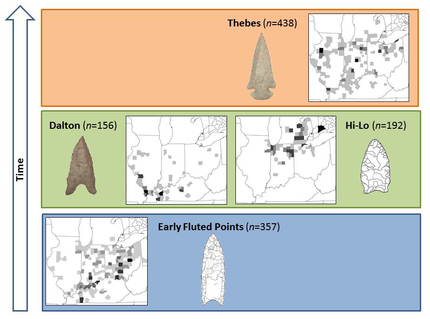 I have added an Excel file of the basic dataset for my 2013 paper in North American Archaeologist to the "Data" section of the website. The file contains basic information on provenience (county), UTMs (county center), typological category, and morphometric data for the 1,771 Paleoindian and Early Archaic projectile points that I used in that study. Like the 2014 AENA paper, the NAA paper was produced from a portion of the analysis in my dissertation. The samples I used for the morphometric analysis in my dissertation and in the NAA paper were identical, so the data in the Excel file are also in the appendices of my dissertation. I'm hoping that providing the data in an electronic format will save someone a great deal of time doing data entry, and will encourage the use of the dataset that took me who-in-the-hell-knows-how-many hours and miles to collect, compile, and produce. The measurements used, as well as the procedures for taking them, are defined in the paper and in my dissertation. The ultimate goal of the two analyses (raw material and morphometric) was to produce a quantitative description of the apparent sequence of material culture change from homogenous (Early Paleoindian) --> regionalized (Late Paleoindian) --> homogenous (Early Archaic) that characterizes the Pleistocene-Holocene transition in the Midcontinent. A quantitative description allowed an "apples to apples" comparison with data from model experiments, providing a basis for evaluating some alternative scenarios explaining the regionalization as a result of various changes in social network structure. As the time to my defense was ticking away, I had to sacrifice some of the modeling work in order to get finished. I was able to draw some conclusions, but a satisfying analysis of the "social boundary" question is still in the future. Once I get set up at my new job I'll be able to restart the modeling work, add data from the southeast to my dataset, and reboot on the question of the social networks of early hunter-gatherers in eastern North America. 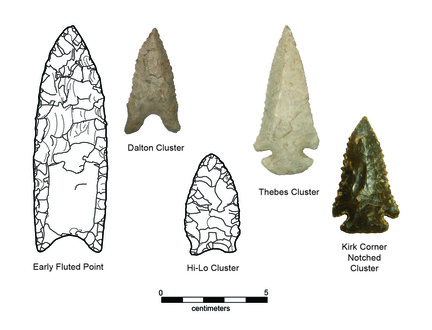 I am a proponent of openly sharing information, and one of my purposes in creating this website was to create a way that I could make available data from own papers and research projects. I realized when I recently paid my bill for the site that it has been a year and I have yet to post any data. So I'm starting now. I have added an Excel file of the basic dataset for my recent paper in Archaeology of Eastern North America to the "Data" section of the website. The file contains basic information on provenience (county), UTMs (county center), raw material, and typological category for the 926 projectile points that I used in that study. The AENA paper was produced from a portion of the analysis in my dissertation. |
All views expressed in my blog posts are my own. The views of those that comment are their own. That's how it works.
I reserve the right to take down comments that I deem to be defamatory or harassing. Andy White
Email me: [email protected] Sick of the woo? Want to help keep honest and open dialogue about pseudo-archaeology on the internet? Please consider contributing to Woo War Two.
Follow updates on posts related to giants on the Modern Mythology of Giants page on Facebook.
Archives
January 2024
Categories
All
|
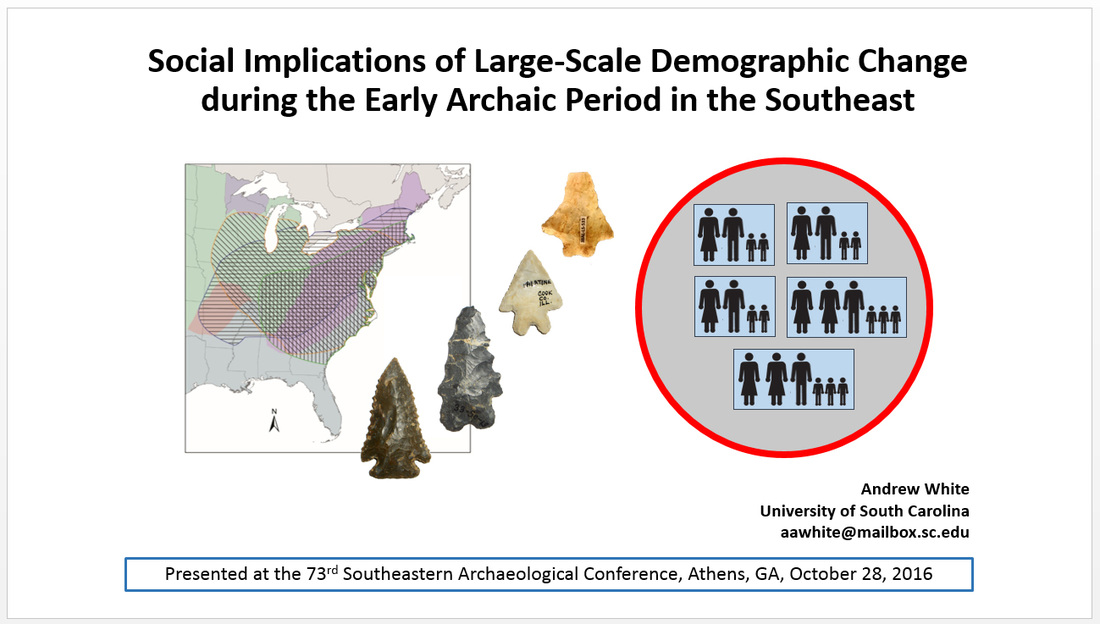


 RSS Feed
RSS Feed
